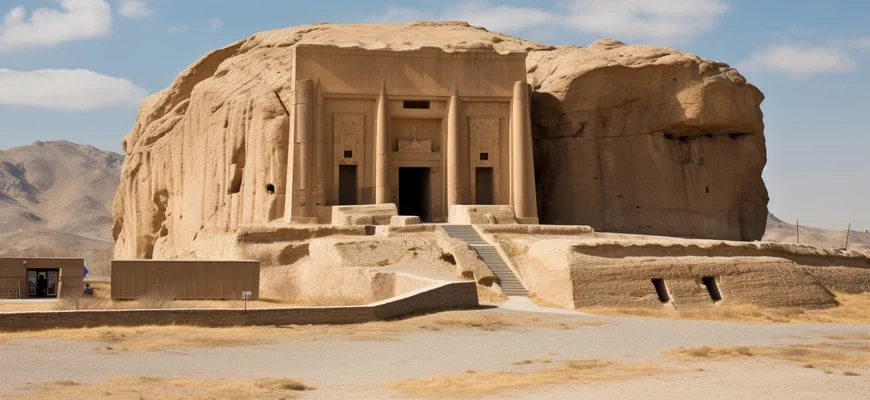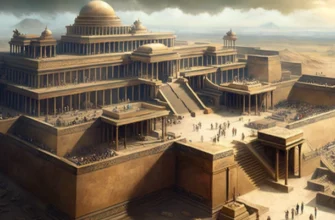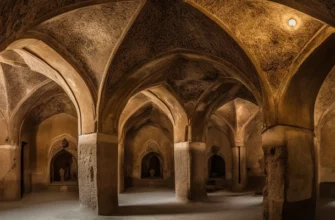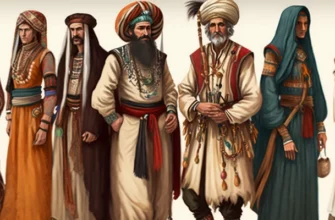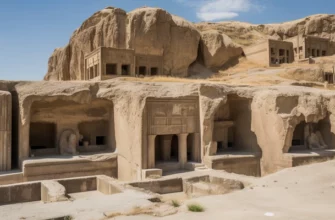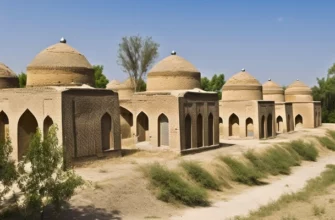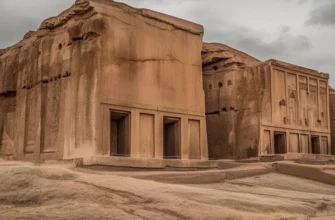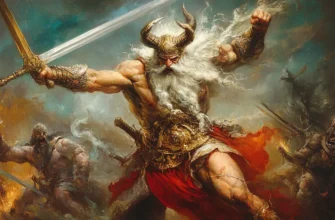Iran during the Parthian period is a period in Iranian history when Parthia, a state covering the territories of modern Iran, Iraq, Turkmenistan, and Afghanistan, existed on this territory for 247 years.
The Parthian Empire was founded by Mithridates I, who broke away from the Seleucid Empire. Over time, Parthia became one of the largest states in the world. The Parthian Empire controlled territories from India to Syria.
During the Parthian Empire, society was organized on the basis of a class system. The state was ruled by a monarch and his aristocratic class. Religion played an important role in Parthian life, and the main gods were Mithra and Anagrandha.
In Iran, the Parthian period played an important role in the development of culture and art. The legacy of Parthian culture is preserved in many museums and archaeological sites in Iran.
In conclusion, the Parthian period is an important stage in the history of Iran. The legacy of Parthian culture and religion remains visible to this day. Studying Parthia is important for preserving and understanding the history and culture of Iran.
Historical context of Parthia
Before considering Parthia as a separate state, it is important to understand the historical context in which it emerged. The Parthian Empire emerged in Iran during a period when a powerful Greek state, the Seleucid Empire, ruled the Near East.
After the death of Alexander the Great in 323 BC, his empire broke up into several states, including the Seleucid Empire, which covered territories from Syria to Bactria (modern-day Afghanistan).
During the Seleucid Empire, the territories of Iran were conquered, and Greek culture and language began to spread throughout these territories. However, over time, against the backdrop of socio-political instability that prevailed in the empire, Parthia appeared in these lands.
The Parthian Empire was founded by Mithridates I in 247 BC in the north of modern Iran. After various military campaigns, the Parthian Empire managed to cover the territories from the modern Iranian plateau to western Afghanistan.
The Parthian Empire had its capital in Nisibis (modern-day Turkey) and controlled the trade routes that passed through the territories controlled by the empire.
Relations with the Roman Empire
Relations between the Parthian Empire and the Roman Empire can be described as complex and tense. The relationship between these two states has fluctuated significantly throughout the history of the Near East.
The Parthian Empire and the Roman Empire fought a series of wars against each other, each trying to gain dominance in the region. In particular, in 53 BC, the Parthians defeated the Roman general Crassus and his army at the Battle of Carrhae. Also, in 116 AD, the Parthians, led by Shapur I, launched a successful attack on the Roman Empire and captured a significant part of Mesopotamia.
However, in contrast to the wars, there were also periods of peaceful relations between these states. For example, in the 20s AD, Augustus, emperor of the Roman Empire, concluded a peace treaty with the Parthian Empire, which remained in force for many years.
In addition, relations between Parthia and Rome were defined not only by wars and peace, but also by trade and cultural relations. Both states traded with each other, exchanging goods and cultural knowledge. For example, Greek artistic and philosophical traditions
Social structure
The social structure of Parthia was very complex and diverse. At the top were the Parthian kings, who were direct descendants of the Achaemenid dynasty. Below them were noble families who controlled various regions and owned large estates. Next were merchants and artisans, and at the lowest level were ordinary peasants and slaves.
Parthian culture was known for its sophistication and diversity. The Parthians were renowned for their artistic skills and the production of various items made of gold, silver, and stones. In addition, the arts of sculpture and painting were well developed in Parthia.
The religion of Parthia was syncretic, combining elements of various religious beliefs. The main religion was Zoroastrianism, but other religious cultures also existed in the country, including the beliefs of the Mesopotamian peoples.
Parthia had a developed education system, including higher education, where subjects such as philosophy, mathematics, medicine, and history were taught. The most famous university in Parthia was Nisibis, where students from all over the country and other regions studied.
The Parthian language was the main language of the state and was used for official documents and communication between government officials. In addition, other languages existed in the country, including Greek, Aramaic, and other languages of the peoples living in Parthia.
Parthia had its own literature, which consisted mainly of religious and historical works. Among the most famous works are the Book of King, the Book of Ardavirag, and the Book of Tokhme-Gavarmand, which reflect the religious beliefs and history of Parthia.
The architecture of Parthia was diverse and complex. The most famous structures were the palace complex of Nisa, which was the largest palace in the world at the time, and the fortress city of Eagle’s Nest.
Overall, the Parthian Empire was a developed and cultured state that left a significant impact on the history of Iran and all of Central Asia.
Iran’s policy during the Parthian period
During the Parthian period, Iran retained its independence from the Roman Empire and other neighboring states. The Parthians managed to maintain their independence thanks to their military power and ability to conclude international treaties.
The Parthian Empire was an active participant in international relations, particularly with the Roman Empire, China, India, and other countries. The Parthians maintained good relations with Rome, trading and signing treaties of alliance and peace.
In domestic politics, the Parthian Empire was a feudal state with centralized power. Power belonged to the great shahs and their supporters. However, the government was religiously and nationally oriented and adhered to certain traditions and customs.
Overall, the Parthian period was successful for Iran in political terms, as the country retained its independence and was able to increase its territory and influence in international relations.
Traces of Parthian culture in Iran
The Parthian period was an important stage in the history of Iran and left behind a number of traces of its culture. One of the most famous legacies of the Parthian Empire is the construction of palaces, temples, and cities.
One of the most famous palaces of the Parthian Empire, Takht-e Jamshid (Solomon’s Throne), is located in central Iran and is still considered a remarkable architectural monument. Its majestic appearance and monumentality attract tourists from all over the world.
Another notable monument of Parthian culture is the mountain city of Bishapur, founded in 266 AD by Shapur I. The city is known for its stone reliefs depicting the life and culture of the Parthian Empire.
The Parthians also contributed to the development of Iranian art, particularly in the production of ceramics, carpets, jewelry, and other handicrafts. Many of these traditions have been preserved and are still used in Iranian folk art today.
Thus, the Parthian Empire had a great influence on the culture and architecture of Iran, thanks to which remarkable monuments of history and art have survived to this day.
Conclusions
The Parthian period in Iranian history was a very important stage that played a significant role in shaping the country’s political and cultural traditions. The expansion of the Parthian Empire contributed to the creation of a large territory that covered a significant part of Central Asia and the Middle East.
The Parthians were one of the first peoples to engage in international trade and enrich themselves through it. They created their own culture, art, and architecture, which had a great historical and cultural influence on Iran and neighboring countries.
Traces of Parthian culture remain in Iran to this day, confirming the important role of this empire in shaping the country’s cultural heritage. The Parthian Empire’s significant contributions to architecture, art, and religion added new features to Iran’s cultural landscape.
The study of the Parthian Empire is of great importance to modern Iran, as it helps to understand the factors that influenced the formation of contemporary Iranian culture and national identity. This knowledge can also help Iran preserve and improve its cultural heritage for future generations.
